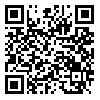BibTeX | RIS | EndNote | Medlars | ProCite | Reference Manager | RefWorks
Send citation to:
URL: http://ioh.iums.ac.ir/article-1-1849-en.html
Background and aims Nominal noise reduction rating of the earmuff manufacturers can be different compared with the actual noise attenuation rating. The current study aimed to determine the actual noise reduction rate of current hearing protection devices in the real workplaces using a field microphone in real ear method (FMIRE).
Methods: In this cross-sectional study, five common earmuffs were studied in both industrial environments with different noise nature on the 50 workers who were selected randomly. Noise reduction ratings of ear muffs were measured based on the ISO 11904 standard, microphone in real ear method, using noise dosimeter (SVANTEK, model SV 102) equipped with a microphone SV 25 model which can install inside the ear. In addition, the knowledge, attitudes and performance of employees about hearing protection were assessed by the developed questionnaire. Data was analyzed by SPSS 21.
Results: Independent of the type of noise exposure, actual insertion loss values for ear muffs in one octave-band frequency was less than the nominal insertion loss values. Actual noise reduction rates of the earmuffs in the exposed of dominant noise low frequency are less than the nominal reduction rates (p < 0.05). Actual noise reduction ratings of the earmuffs in the exposed of the high-frequency noise were above the nominal noise reduction ratings which its differences are not statistically significant (p< 0.05). The workers' knowledge, attitudes and performance index about hearing protection was within acceptable level.
Conclusion: The frequency nature of noise is very impressive on the actual noise reduction rates can be achieved from earmuffs. Therefore, data about the frequency analysis of ambient noise is key ingredient when selecting hearing protectors in any workplaces. FMIRE could facilitate rapid and simple measurement of the actual acoustic performance of earmuffs in real conditions of industrial environments.
Received: 2016/06/9 | Accepted: 2016/11/15 | Published: 2017/12/4
| Rights and permissions | |
 |
This work is licensed under a Creative Commons Attribution-NonCommercial 4.0 International License. |





